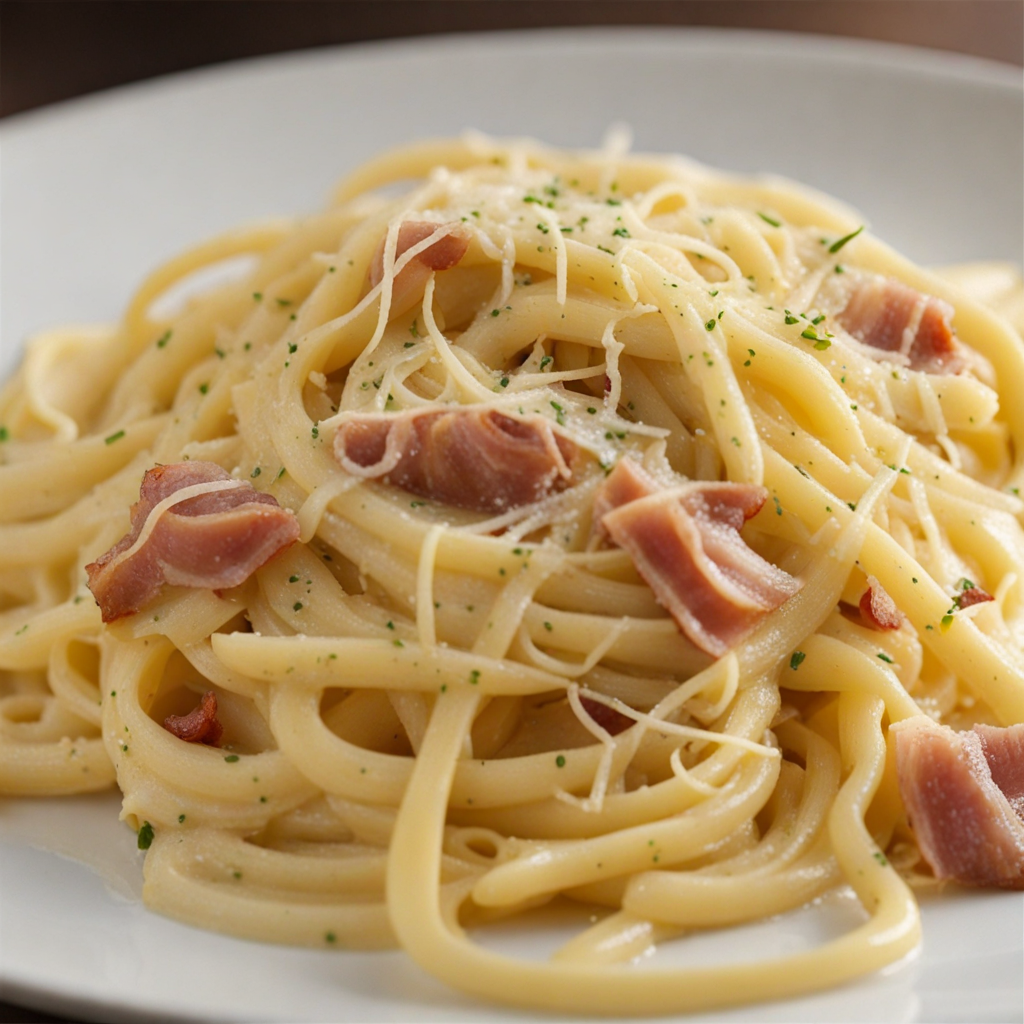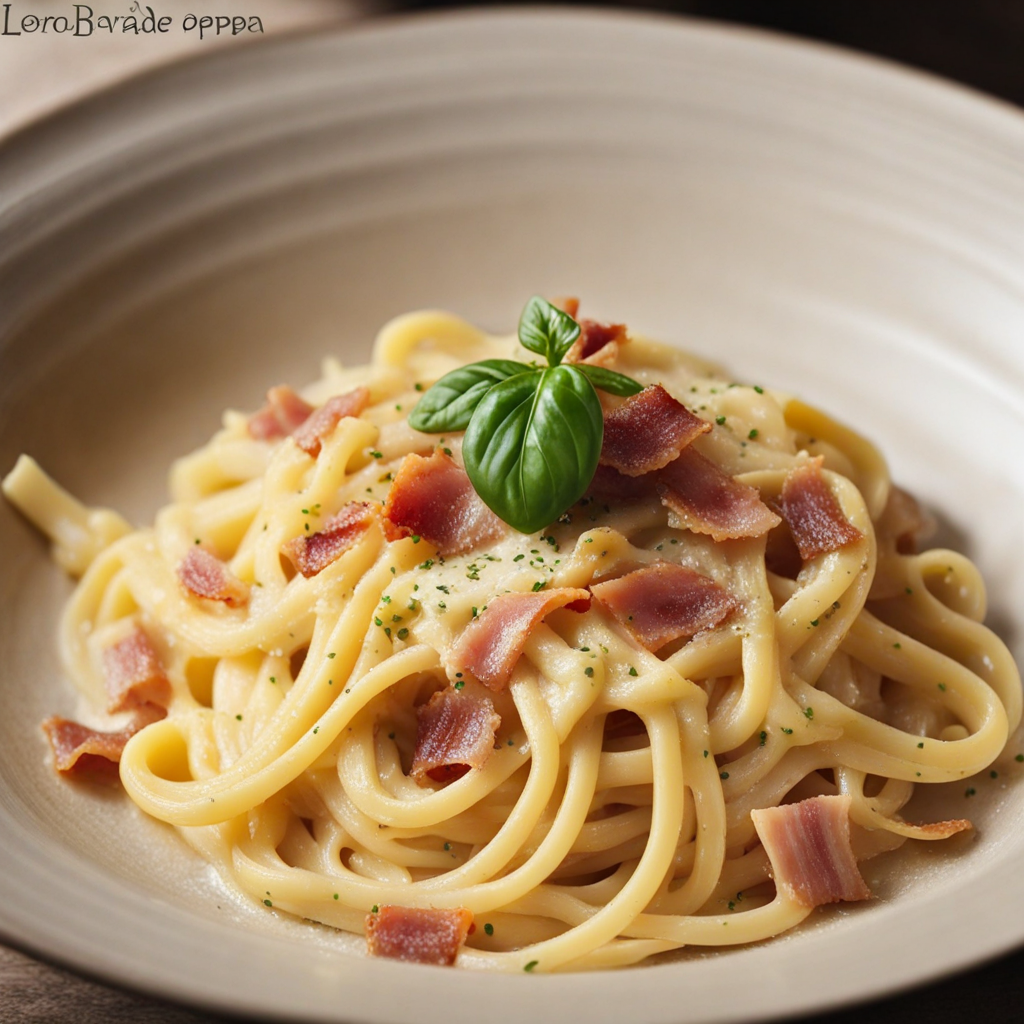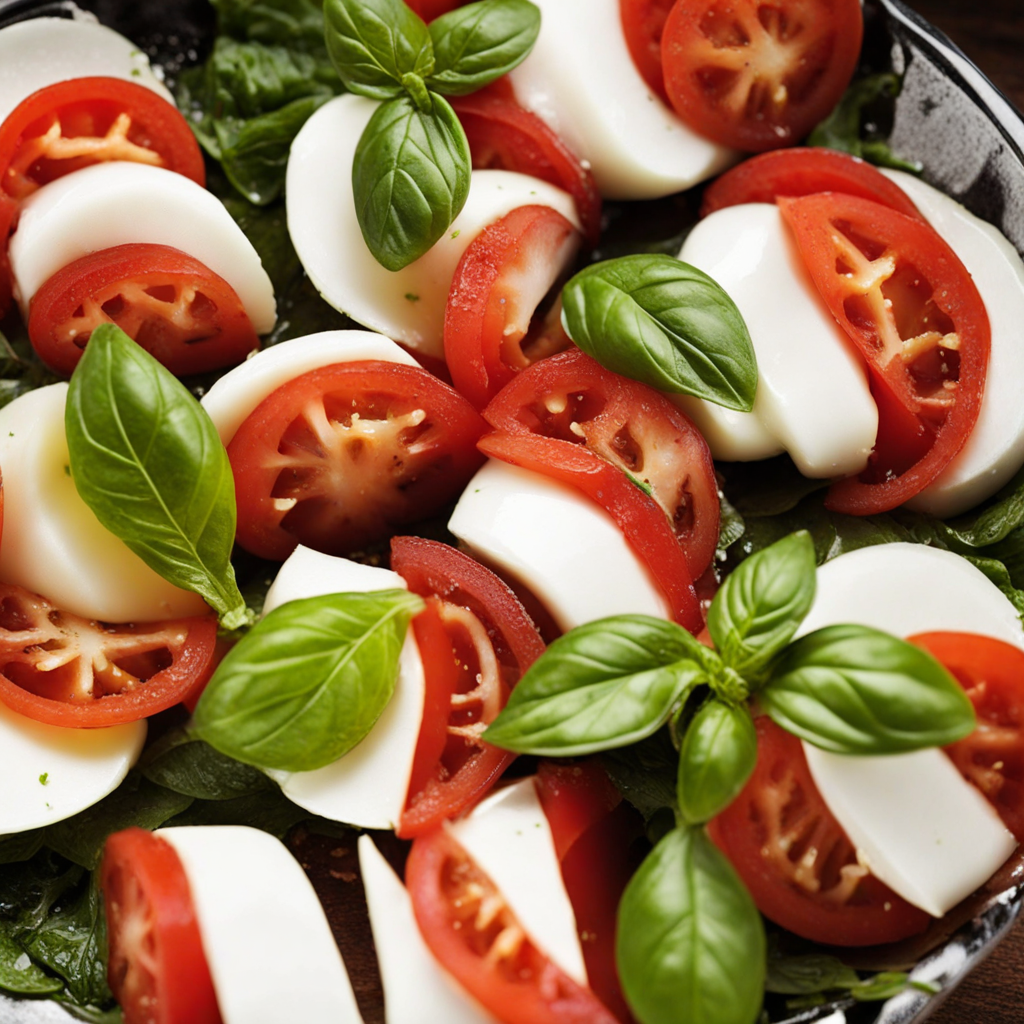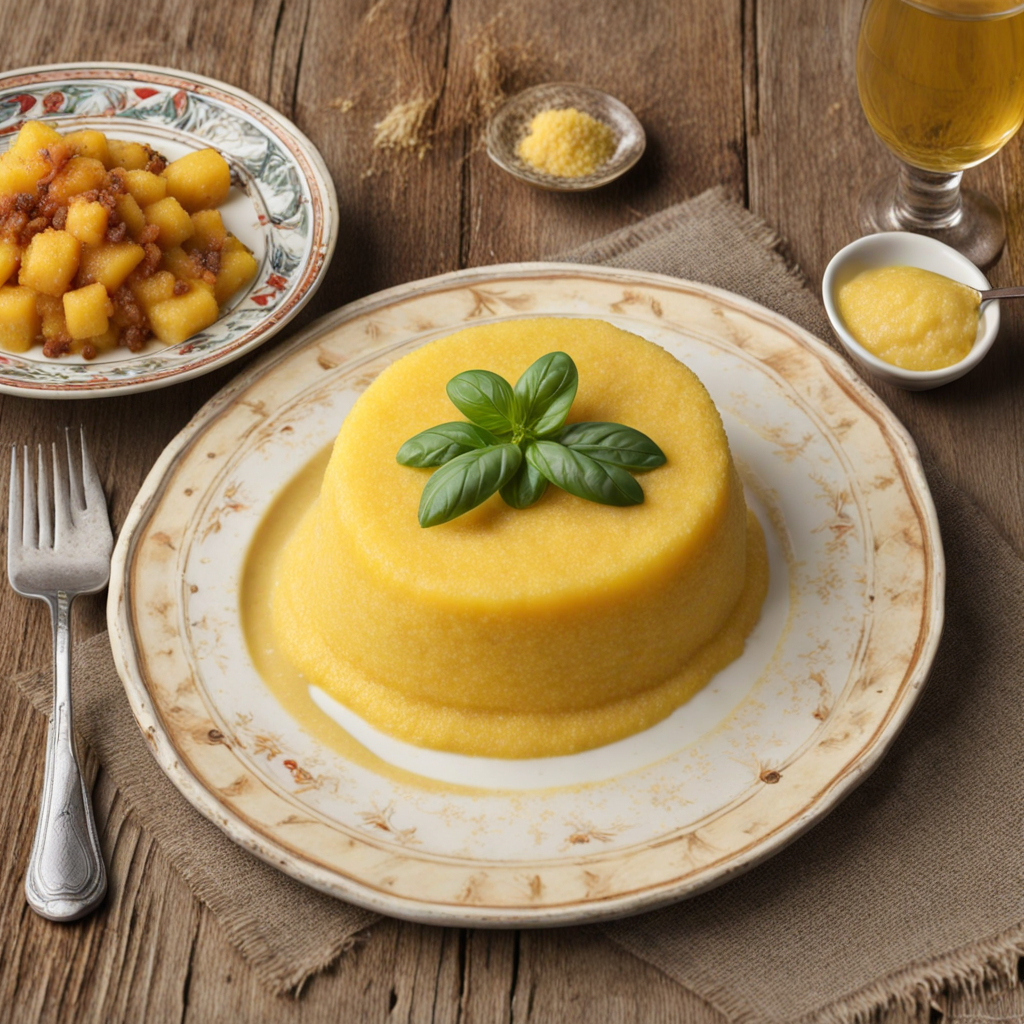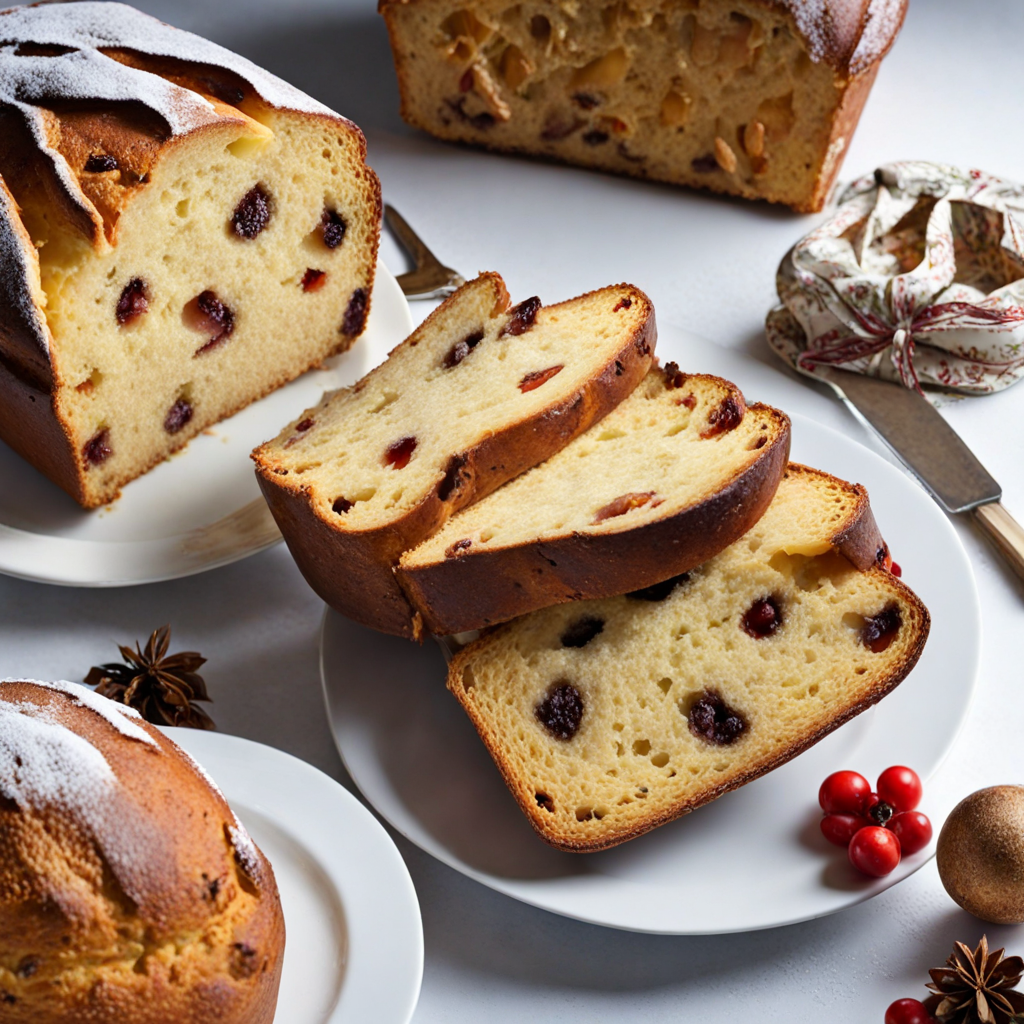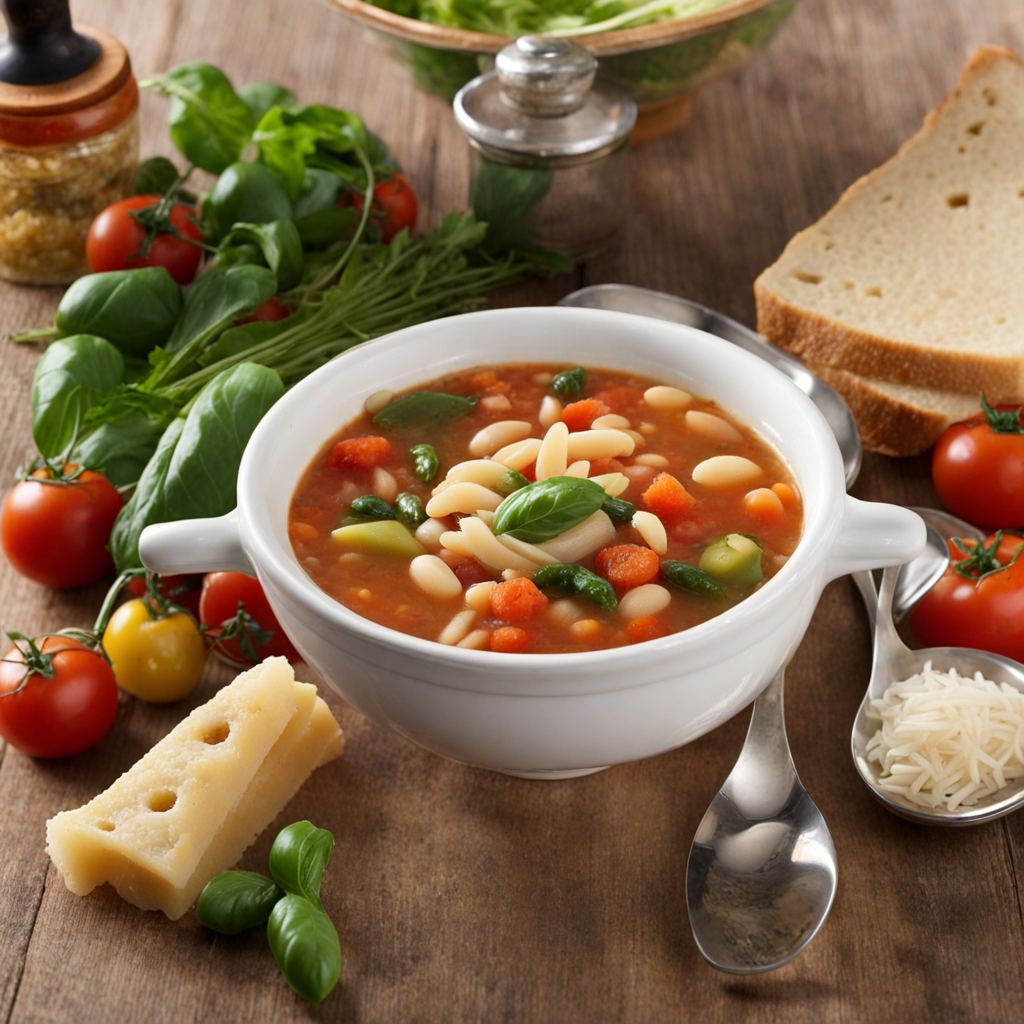Carbonara
Carbonara is a classic Italian pasta dish that hails from the region of Lazio, particularly Rome. It is renowned for its creamy texture and rich flavor, which is achieved without the use of cream. The key ingredients include spaghetti or another long pasta, guanciale (cured pork cheek), Pecorino Romano cheese, eggs, and freshly cracked black pepper. This combination creates a luxurious sauce that clings beautifully to the pasta, offering a delightful contrast of textures and flavors with each bite. When preparing Carbonara, the guanciale is rendered down until crispy, releasing its flavorful fat, which becomes the base for the sauce. The eggs and cheese are whisked together until smooth, and then gently combined with the hot pasta and guanciale. The residual heat from the pasta cooks the eggs just enough to create a silky, cohesive sauce without scrambling them. The final touch of freshly cracked black pepper adds a subtle heat that enhances the overall dish, making it a comforting yet indulgent meal. What makes Carbonara truly special is its simplicity and the quality of its ingredients. Each bite delivers a harmonious blend of savory, salty, and umami flavors, making it an unforgettable experience for your palate. It’s a dish that embodies the essence of Italian cooking, showcasing how a few high-quality ingredients can come together to create something extraordinary. Whether enjoyed at a rustic trattoria in Rome or made in your own kitchen, Carbonara promises a taste of Italy that is both authentic and deeply satisfying.
How It Became This Dish
Origins of Carbonara The origins of Carbonara are somewhat nebulous, with several theories regarding its inception. Most food historians agree that it emerged in the mid-20th century, likely around the 1940s in Italy. One prevalent theory links the dish to Italian charcoal workers, or "carbonari," who would prepare a simple meal of pasta, eggs, and cheese over a campfire while working in the Apennine mountains. The name "Carbonara" is thought to derive from these charcoal workers, who required a hearty and easily transportable meal during their arduous labor. Another theory suggests that Carbonara may have been influenced by the American soldiers stationed in Italy during World War II. They brought with them bacon and eggs, which could have inspired Italian cooks to create a local variant that incorporated these ingredients into a pasta dish. This fusion of Italian culinary tradition with American influence gave birth to a new classic that would eventually capture the hearts of food lovers worldwide. Cultural Significance Carbonara is more than just a dish; it is a cultural symbol of Roman cuisine and Italian culinary pride. It embodies the principles of simplicity and quality that are foundational to Italian cooking. The dish typically comprises just a few ingredients: spaghetti or rigatoni, eggs, hard cheese (Pecorino Romano or Parmigiano-Reggiano), guanciale (cured pork cheek), and black pepper. This minimalist approach highlights the importance of using high-quality components, reflecting Italy’s deep agricultural roots and the value placed on fresh, local produce. In Rome, Carbonara has become a staple in trattorias and family kitchens alike, often eliciting passionate debates about the "authentic" way to prepare it. Each family may have its unique twist, and these variations are embraced rather than frowned upon. The dish is often associated with conviviality and celebration, frequently served during gatherings where friends and family come together to share food and stories. Development Over Time As time progressed, Carbonara evolved, adapting to modern tastes and the availability of ingredients. While traditionalists advocate for the classic method using guanciale, many people have experimented with alternatives such as pancetta or bacon. The original recipe calls for the egg yolk to create a creamy sauce when combined with the hot pasta, but some contemporary iterations incorporate cream, which can lead to heated debates among purists. In the late 20th century and early 21st century, Carbonara gained international fame, becoming a beloved dish far beyond Italian borders. Its popularity surged as Italian cuisine spread globally, particularly in the United States and other Western countries. Italian restaurants began to feature Carbonara on their menus, often adapting the recipe to cater to local palates. This led to the emergence of numerous variations, including vegetarian versions that replace guanciale with vegetables or mushrooms. Regional Variations While Roman Carbonara is the most recognized version, Italy’s diverse culinary landscape means that variations exist throughout the country. In Southern Italy, for example, some cooks incorporate different types of pasta or add garlic, which is not typical in the traditional Roman preparation. Additionally, the use of other cheeses, such as Grana Padano, has become more common in various adaptations. As global interest in authentic Italian cuisine has grown, there has been a resurgence in traditional preparation methods. Culinary schools and food enthusiasts are revisiting the roots of Carbonara, emphasizing the importance of using guanciale, fresh eggs, and high-quality cheese. This renewed focus on authenticity has helped preserve the cultural significance of Carbonara while also allowing it to adapt to contemporary culinary trends. Carbonara in Popular Culture Carbonara has not only made its mark in culinary circles but has also found a place in popular culture. Food television shows, cookbooks, and social media platforms have all played a role in promoting Carbonara as an iconic dish. Chefs and home cooks alike share their recipes and techniques, sparking interest in this beloved pasta dish. The dish has also been featured in various films and television shows, often symbolizing Italian heritage and comfort food. The romanticization of Carbonara in media reflects its status as a quintessential Italian dish, one that evokes feelings of home and nostalgia. Its representation in popular culture has further cemented its place as a culinary icon, illustrating how food can transcend borders and connect people. The Future of Carbonara As culinary trends continue to evolve, Carbonara is likely to see further reinterpretations while maintaining its traditional roots. Chefs around the world are experimenting with new flavors and ingredients, pushing the boundaries of what Carbonara can be. This innovative spirit is a testament to the dish's versatility and enduring appeal. In recent years, there has also been a growing movement toward sustainability and local sourcing in the culinary world. As chefs and home cooks become more conscious of their ingredient choices, Carbonara could see a return to more traditional practices that emphasize quality and locality. This could lead to a renaissance of the dish, one that honors its origins while embracing modern culinary ideals. Conclusion The journey of Carbonara from its humble beginnings to its status as a global culinary icon is a fascinating tale of tradition, innovation, and cultural significance. As this dish continues to evolve, it remains a delicious representation of Italy's rich gastronomic heritage, celebrated in homes and restaurants around the world. The ongoing appreciation for Carbonara serves as a reminder of the power of food to bring people together, celebrate culture, and create lasting memories.
You may like
Discover local flavors from Italy


